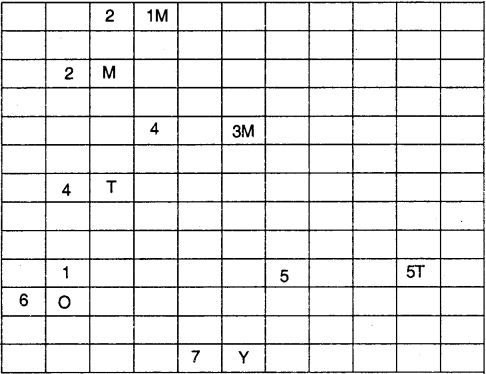1. Multiple choice questions.
1. Which one of the following minerals is formed by decomposition of rocks,
leaving a residual mass of weathered material?
(a) coal
(b) bauxite
(c) gold
(d) zinc
Answer:
(i) a
2. Koderma, in Jharkhand is the leading producer of which one of the following
minerals?
(a) bauxite
(b) mica
(c) iron ore
(d) copper
Answer:
(b) mica
3. Minerals are deposited and accumulated inthestratas of which of the
following rocks?
(a) sedimentary rocks
(b) igneous rocks
(c) metamorphic rocks
(d) none of the above
Answer:
(b) igneous rocks
4. Which one of the following minerals is contained in the Monazite sand?
(a) oil
(b) uranium
(c) thorium
(d) coal
Answer:
(c) thorium
2. Answer the following questions in about 30 words.
Question 1.
Distinguish between the
following:
(a) ferrous and non-ferrous
minerals
(b) conventional and
non-conventional sources of energy.
Answer:
(a) Ferrous minerals contain iron
where as non-ferrous minerals do not contain iron. Ferrous minerals,
relatively, make a strong base for the metallurgical industries, though
non-ferrous minerals too play a vital role in the industries, though
non-ferrous minerals too play a vital role in the development of industries.
Ferrous minerals example-iron ore, manganese, nickel, cobalt etc.
Non-ferrous minerals, example-copper, lead, tin, bauxite etc.
(b) Conventional sources of energy are coal, petroleum, gas, in a way exhaustible sources of energy; non-conventional sources of energy are solar, tidal, water, wind sources, usually in abundance and inexhaustible.
Question 2.
What is a mineral?
Answer:
A mineral is a homogenous
substance with a definable internal structure. It is found in varied forms in
nature.
Question 3.
How are minerals formed in
igneous and metamorphic rocks?
Answer:
In igneous and metamorphic rocks, minerals may occur in the cracks,
crevices, faults or joints. The smaller occurence are called veins and the
larger lodes. In most cases, they are formed when minerals in liquid/molten
and gaseous forms are forced upward through cavities towards the earth’s
surface. They cool and solidify as they rise. Major metallic minerals, like
tin, copper, zinc and lead etc. are obtained from veins and lodes.
Question 3.
Why do we need to conserve
mineral resources?
Answer:
Minerals resources constitute the wealth of a nation. As they are in less
quantity and are short-lived, we need to conserve these minerals. We have to
extract these minerals continuously. Recycling of metals, using scrap metals
and other substitutes can help us conserve mineral resources.
3. Answer the following questions in about 120 words.
Question 1.
Describe the distribution of
coal in India.
Answer:
In India coal occurs in rock series of two main geological ages, namely
Gondwana, a little over 200 million years in age and in tertiary deposits
which are only about 55 million years old. The major resources of Gondwana
coal, which are metallurgical coal, are located in Damodar Valley (West Bengal
Jharkhand). Jharia, Raniganj, and Bokaro are important coal fields. The
Godawari, Mahanadi, Son and Wardha valleys also contain coal deposits.
Tertiary coal occurs in the north-eastern states of Meghalaya, Assam, Arunachal Pradesh and Nagaland. Jharkhand, Madhya Pradesh, Chhattisgarh and Orissa produce 67 per cent of total coal. Andhra Pradesh, Maharashtra, West Bengal and Uttar Pradesh account for 30 per cent of total coal production.
Question 2.
Why do you think that solar
energy has a bright future in India?
Answer:
Solar energy is a renewable source
of energy unlike coal and petroleum. It has a bright future in India because
of the following reasons:
(a) India being a tropical country has enough scope for production and
utilisation of solar energy.
(b) It is
pollution free and ecofriendly. It can be used for sustainable development.
(c) In rural areas, it is used for cooking, heating of water, lighting of
homes and streets, etc. Hence, is becoming popular there.
(d) It will minimise the dependence of rural households on firewood and dung
cakes, which in turn will contribute to environmental conservation and
adequate supply of manure in agriculture.
Activity
Fill the name of the correct mineral in the crossword below:
Across
1. A ferrous mineral (9)
2. Raw material
for cement industry (9)
3. Finest iron ore
with magnetic properties (9)
4. Highest
quality hard coal (10)
5. Aluminium is
obtained from this ore (7)
6. Khetri mines
are famous for this mineral (6)
7. Formed
due to evaporation (6)
Down
1. Found in placer deposit (14)
2. Iron ore mined in Bailadila (8)
3.
Indispensable for electrical industry (4)
4.
Geological Age of coal found in north east India (8)
5. Formed in veins and lodes (3)
Answer:
Across
1. MANGANESE
2. LIMESTONE
3. MAGNETITE
4. ANTHRACITE
5. BAUXITE
6. COPPER
7. GYPSUM
Down
1. GOLD
2. HEMATITE
3. MICA
4. ANTHRACITE
5. TIN